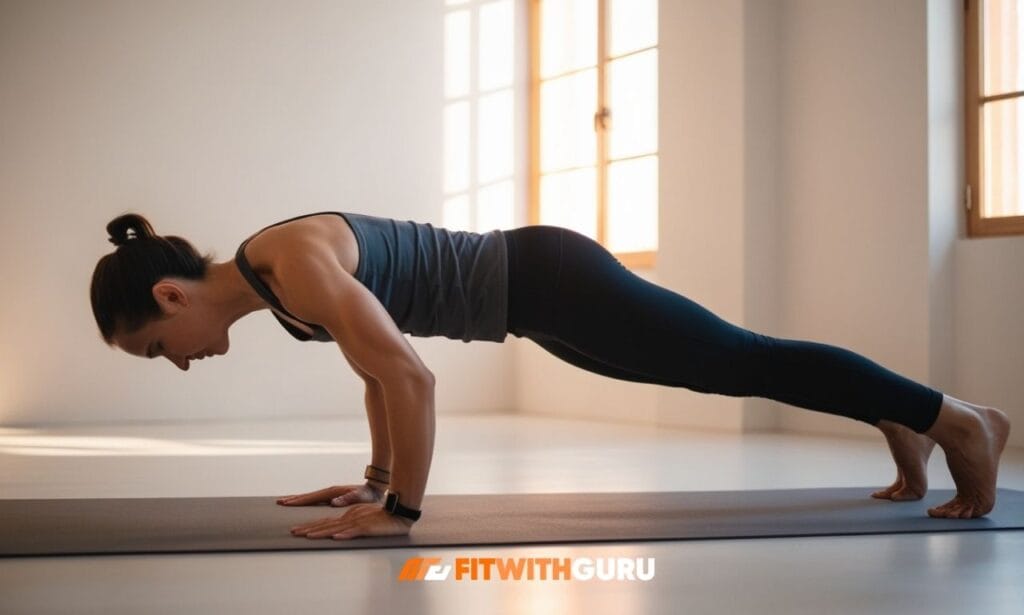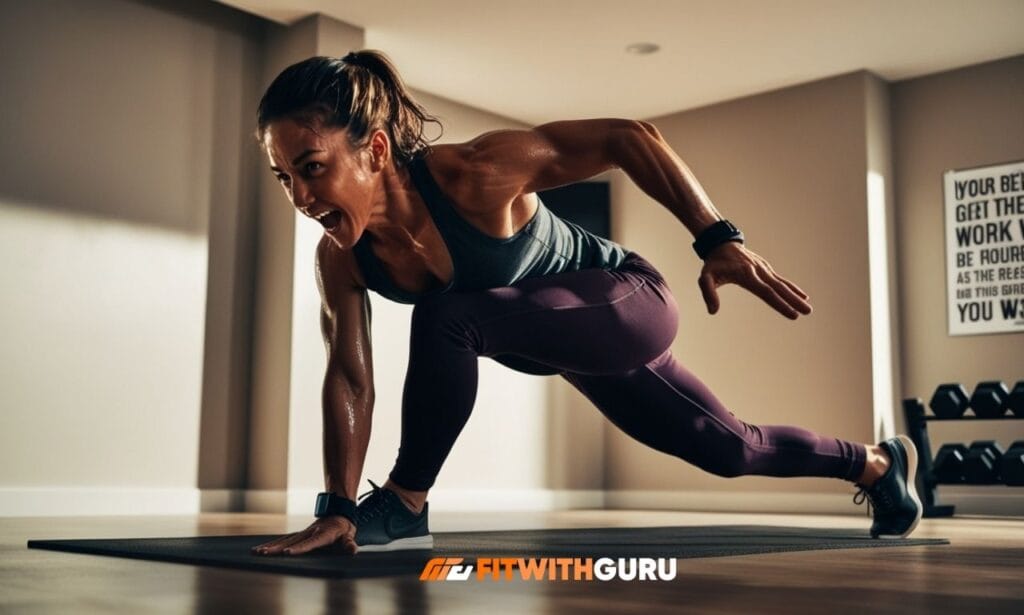Bodyweight training is perfect for fresh entrants who want to start a physical training journey. This exercise requires no equipment, making it easy for anyone to perform. Whether a strength training workout at home, in a park, or a tiny apartment, a bodyweight training workout is the perfect way to gain muscle, strength, and confidence.
This guide will look at the five best bodyweight training workouts that one can try as a beginner. The following are essential, beneficial, and specifically chosen to lay down a good base for your exercise regimen.
What Is Bodyweight Training and Why Is It Great for Beginners?
Bodyweight training is a fitness system where people employ their body weight as weightlifting. As usual, it is a perfect workout system for newbies because it is easy to get into, no fitness equipment is required, and it can easily be altered to accommodate users’ difficulties.
The Basics of Bodyweight Training
Bodyweight training workout include pushups, squats, planks, and lunges. These movements use gravity with your weight to offer some form of resistance, making your muscles work harder. It is so much more than that; it is a functional training strategy that prepares your body for action in your daily life.
Benefits of Starting with Bodyweight Exercises
Bodyweight exercises enhance muscle power, flexibility, balance, and stamina. They are cost-friendly since no gym membership and equipment is needed during the exercise. Moreover, they reduce the risk of injury because one can set the range, level of motion, and exercise intensity.
Why No Equipment Is Needed
Indeed, one of the greatest strengths of bodyweight training is versatility, and it requires no equipment. All these exercises can be done at home, near a park, or even during a journey. The best part is that calisthenics does not require machines or weights, making it easy to remain consistent when working out.
How to Prepare for a Bodyweight Training Workout
Preparation is essential to getting maximum results from your bodyweight workouts. Follow these steps to save time for preparation and guarantee a safe and practical session.
Choosing the Right Space for Workouts
Locate a visibility range that has no clutter or interference from objects. This means there should be sufficient space to move one’s body around, at least from the ankle joint, so you can stretch out, jump, or do some pushups, wherever it may be, in a living room, backyard, or park.
Essential Warm-Up Exercises
Before beginning your exercise session, use a dynamic strength training workout technique. Among them are arm circles, leg swings, high knees, jogging on the spot, and jumping jacks. Stretching the muscles before engaging in an activity reduces the rate of contracting an injury and improves the results.
Setting Realistic Goals for Progression
You need to set small, reachable targets to keep up the motivation. Even if it is as simple as going from holding an extended plank to holding the plank for more time, it demoralizes the person to push forward.
Top 5 Bodyweight Training Workouts for Beginners
These five exercises are basic in enhancing lower body strength, balancing, and body strength in general. These exercises are simple enough for a newbie but can be programmed to increase their difficulty level as the latter progresses.
1. Pushups for Upper Body Strength
Pushups are exercises that have been great in helping build chest, shoulder, and arm muscles.
- How to do it: Stand on your hands and knees, with your wrists right under your shoulders and your knees beneath your hips, your hands slightly more than shoulder-width apart. Bend your legs and lower your body to the floor, nearly touching the floor, then push back up.
- Reps: Aim for 8–12 reps.
- Tip: Ensure your back is straight and your abdominal muscles are tensed.

2. Squats for Lower Body Power
Squats nicely impact the gluteal, quadriceps, and hamstring muscles.
- How to do it: With your feet positioned at a distance equal to the width of your shoulders. Bend your knees a little as though you are sitting on a chair. Keep your strength training chest workout up and your knees in what is behind your toes.
- Reps: Perform 10–15 reps.
- Tip: Squat as deep as you can while still maintaining proper form.
3. Planks for Core Stability
Planking is one of the most effective exercises, and it helps to tone the muscles of your lower back and spine.
- How to do it: Begin in a forearm plank position with the body in a straight line across the forearms and the feet. Thus, you should pull your stomach in and maintain the exercise.
- Duration: Hold for 20–30 seconds.
- Tip: Do not allow your hips to sway or draw up too high.
4. Lunges for Balance and Strength
Again, lunges are effective in building leg and glute muscles while helping to build better balance.
- How to do it: Walk forward with one leg and place it in front of the other, bend both knees, and sink your hips as far as possible. Slide to the beginning position.
- Reps: Perform 8–10 reps per leg.
- Tip: Make sure to keep your front knee directly above your ankle.
5. Burpees for Total-Body Conditioning
Burpees are a strength cardio exercise because they exercise the whole body.
- How to do it: Perform this exercise by first standing, then lowering into a squat, placing hands on the ground, and then kicking the feet back as you retain a plank position.
- Reps: Perform 6–10 reps.
- Tip: Make sure to pace the movements down and keep proper posture throughout.
Common Mistakes to Avoid in Bodyweight Training
They result in climax or in limping your progress. Here are key pitfalls to avoid:
1. Ignoring Proper Form and Technique
Your muscles and joints may be strained if you use improper form. Focus on quality over quantity, and don’t rush through movements. Incorrect form could lead to putting stress on your muscles and bones. He insisted on low impact and low velocity, meaning quality over quantity, and never moving through the sets quickly.
2. Skipping Warm-Up or Cool-Down
A warm-up prepares the body, and a cool-down reduces the stiffness associated with a bodyweight training workout. The following steps do not require bypassing whatsoever.
3. Overtraining or Doing Too Much Too Soon
Bring it on in steps and introduce more and more pressure.’ Overtraining can lead to fatigued muscles, soreness, pains, and other bodily injuries.

People Also Ask
Can bodyweight training work out to lose weight?
Indeed, bodyweight training is practical for weight loss as it burns up calories, and increasing mass burns calories at an even higher rate. When it is combined with a proper diet, the burning of fats is achieved.
Which bodyweight training workout is best for beginners?
Some basic fat-burning exercises cover body weight assessment, comprising pushups, bodyweight squats, planking, and glute bridge, with the workout performing three sets of 10-12 reps. This routine introduces strength-building into the training mix and focuses on large body parts.
Can bodyweight training work out to lose weight?
Yes, you can lose weight while doing a bodyweight training workout primarily because of the process of muscle gain and the increased rate of metabolism. When done together with a low-calorie diet, it brings about the best results a person could desire about losing weight.
Conclusion
Training the bodyweight training workout is one of the easiest methods, if not the most efficient, of introducing a novice to the fitness field. Pushups, squats, planks, lunges, and burpees are some bodyweight exercises that help one build strength, work on his or her endurance, and, at large, improve one’s fitness without having to go through the rigors of using any equipment.
The three primary principles in performing aerobic exercise correctly are routine, posture, and targets. Begin small, monitor the progress, and reward yourself for the achievements. When one is committed to bodyweight training, the activity can become a routine and fulfilling exercise.

